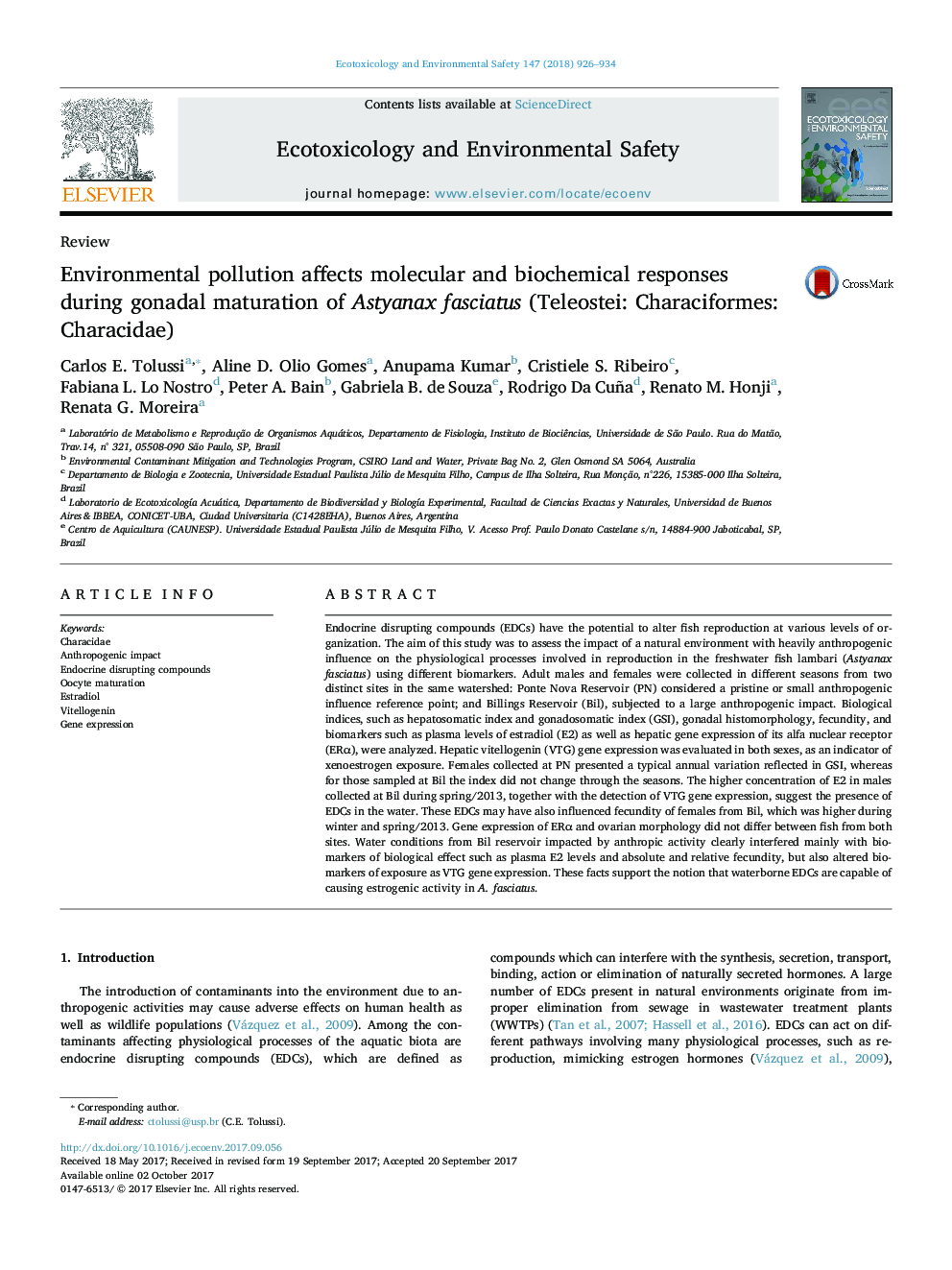| کد مقاله | کد نشریه | سال انتشار | مقاله انگلیسی | نسخه تمام متن |
|---|---|---|---|---|
| 5747884 | 1618917 | 2018 | 9 صفحه PDF | دانلود رایگان |

- A multibiomarker approach is used to investigate the effects of EDC in A. fasciatus.
- Pollutants present in the impacted site act as endocrine disruptors in A. fasciatus.
- The presence of estrogenic compounds alters female fecundity in Billings reservoir.
- Anthropogenic pollution interferes in A. fasciatus oocyte maturation.
- Xenoestrogenic compounds induced vitellogenin gene expression in males.
Endocrine disrupting compounds (EDCs) have the potential to alter fish reproduction at various levels of organization. The aim of this study was to assess the impact of a natural environment with heavily anthropogenic influence on the physiological processes involved in reproduction in the freshwater fish lambari (Astyanax fasciatus) using different biomarkers. Adult males and females were collected in different seasons from two distinct sites in the same watershed: Ponte Nova Reservoir (PN) considered a pristine or small anthropogenic influence reference point; and Billings Reservoir (Bil), subjected to a large anthropogenic impact. Biological indices, such as hepatosomatic index and gonadosomatic index (GSI), gonadal histomorphology, fecundity, and biomarkers such as plasma levels of estradiol (E2) as well as hepatic gene expression of its alfa nuclear receptor (ERα), were analyzed. Hepatic vitellogenin (VTG) gene expression was evaluated in both sexes, as an indicator of xenoestrogen exposure. Females collected at PN presented a typical annual variation reflected in GSI, whereas for those sampled at Bil the index did not change through the seasons. The higher concentration of E2 in males collected at Bil during spring/2013, together with the detection of VTG gene expression, suggest the presence of EDCs in the water. These EDCs may have also influenced fecundity of females from Bil, which was higher during winter and spring/2013. Gene expression of ERα and ovarian morphology did not differ between fish from both sites. Water conditions from Bil reservoir impacted by anthropic activity clearly interfered mainly with biomarkers of biological effect such as plasma E2 levels and absolute and relative fecundity, but also altered biomarkers of exposure as VTG gene expression. These facts support the notion that waterborne EDCs are capable of causing estrogenic activity in A. fasciatus.
Journal: Ecotoxicology and Environmental Safety - Volume 147, January 2018, Pages 926-934